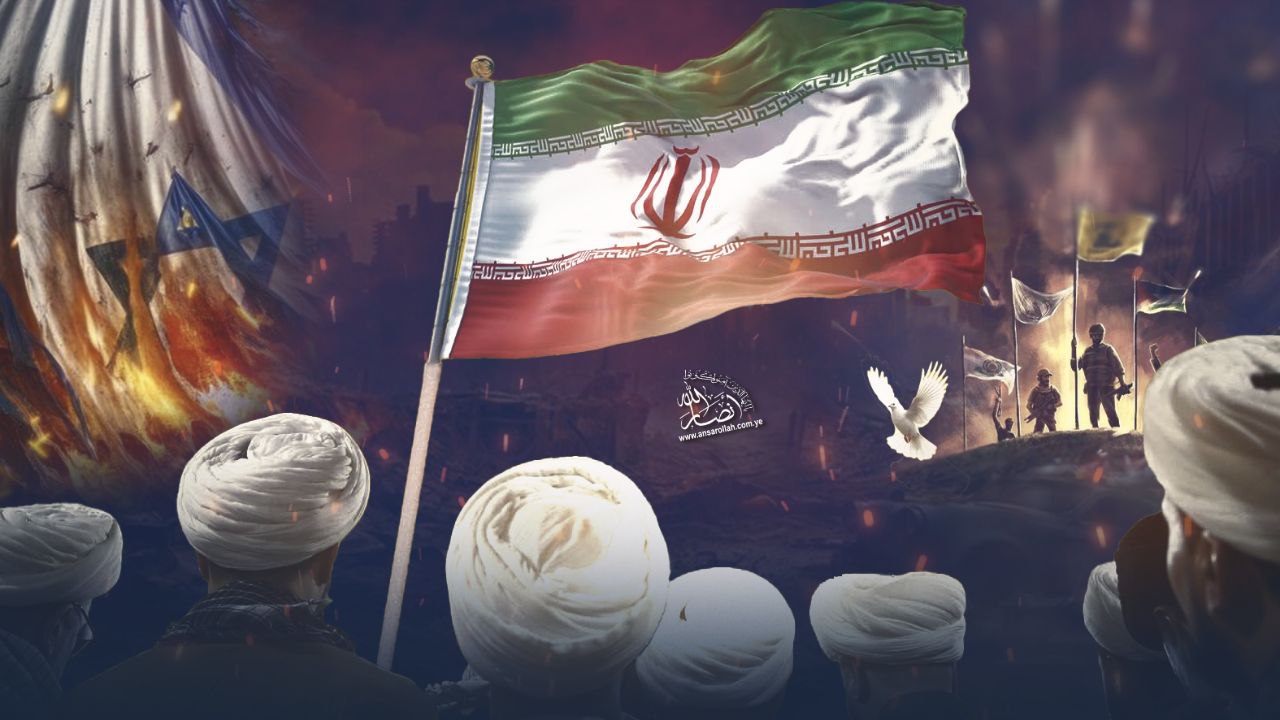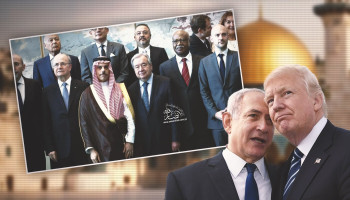Published: 2 Muharram 1447 AH
The Israeli entity did not launch its direct and treacherous aggression against the Islamic Republic of Iran except with a high level of confidence that it was on the verge of achieving a swift military victory and realizing its declared objectives across the region. This was the first and primary factor that emboldened the entity to enter a war it had long hesitated to engage in for decades.
The second factor—no less significant—was the comprehensive American support for every Israeli act of aggression, including the assurance of a U.S.-engineered emergency exit to stop the war. That exit came after twelve consecutive days of devastating attacks that destabilized the Israeli interior and turned its much-celebrated spring into desolation—an upheaval unmatched by any of its previous wars, including those that established the entity and preserved its military supremacy for over seventy years.
When examining the goals of the aggression against Iran—goals that clearly align with the broader American-Zionist project—it becomes evident that this war cannot be separated from the al-Aqsa Flood battle and the ongoing genocide in Gaza, even if Iran’s nuclear program was used as a pretext. It is now certain that Iran’s decisive victory has silenced the Zionist entity and crushed its pathological ambitions to sustain a policy of unchecked regional domination. This marks the end of the era of absolute impunity, during which the Zionist enemy imposed its will and hegemony on the region’s countries and peoples.
The implication is clear: the so-called New Middle East or West Asia will no longer be defined by American-Zionist designs. The so-called “moderate axis,” which was well on its way to becoming an openly pro-Israel bloc, will not continue its path of normalization and betrayal of the Palestinian cause on a bed of roses—as would have been the case had Iran been defeated, May Allah forbid.
This victory also signals a renewed opportunity for the resistance forces and defiance to remain engaged and influential in revitalizing the Arab regional order—an order that currently lies in unprecedented disarray, due in large part to the Gulf leadership’s complete submission to the American embrace. Ironically, this same leadership calls on resistance movements to “return to the Arab fold,” as if the issue were merely a matter of misunderstood terminology.
Through its military success in this historic confrontation, Iran has opened the door for new scenarios to reemerge—scenarios that exist beyond the scope of American influence. These alternatives are still in the process of reconfiguration following the severe blows suffered by the resistance axis in Lebanon and Syria, the retreat in Iraq, and the stalemate of action toward the genocidal Gaza war.
Undoubtedly, these promising scenarios still require intensive political effort and sustained hard work, with careful reflection on the painful lessons and experiences that nearly dismantled the entire axis. Equally important is the need to keep pace with the American-Zionist scheme for the region, which is now likely to pursue political strategies no less consequential and dangerous than its military and intelligence offensives.
The daily developments of the al-Aqsa Flood have laid bare the flaws and dysfunctions of the Arab regional order. Gaza’s tragedy has largely fallen outside the considerations of Arab regimes—and, in many cases, of their populations as well. This vacuum is what encouraged and emboldened the Zionist entity to commit acts of genocide and total war, using its military achievements in service of fulfilling messianic visions of “Greater Israel.”
And because the Zionist entity claimed it was fighting what it calls Iran’s proxies in the region—and had inflicted undeniable blows—it proceeded to plan a final blow against what it referred to as “the head of the octopus” in Tehran.
Yet the Zionist enemy’s attempt ended in catastrophic failure. It not only failed to achieve its malicious objective but also exposed its national security and deterrence architecture to a real and unprecedented existential threat—something unmatched in its entire history.
Accordingly, the Zionist enemy now finds itself forced to reassess all its calculations—both in Gaza and elsewhere—and to revise its strategic posture in light of Iran’s victory and its unfolding consequences, which remain open to all possibilities.







